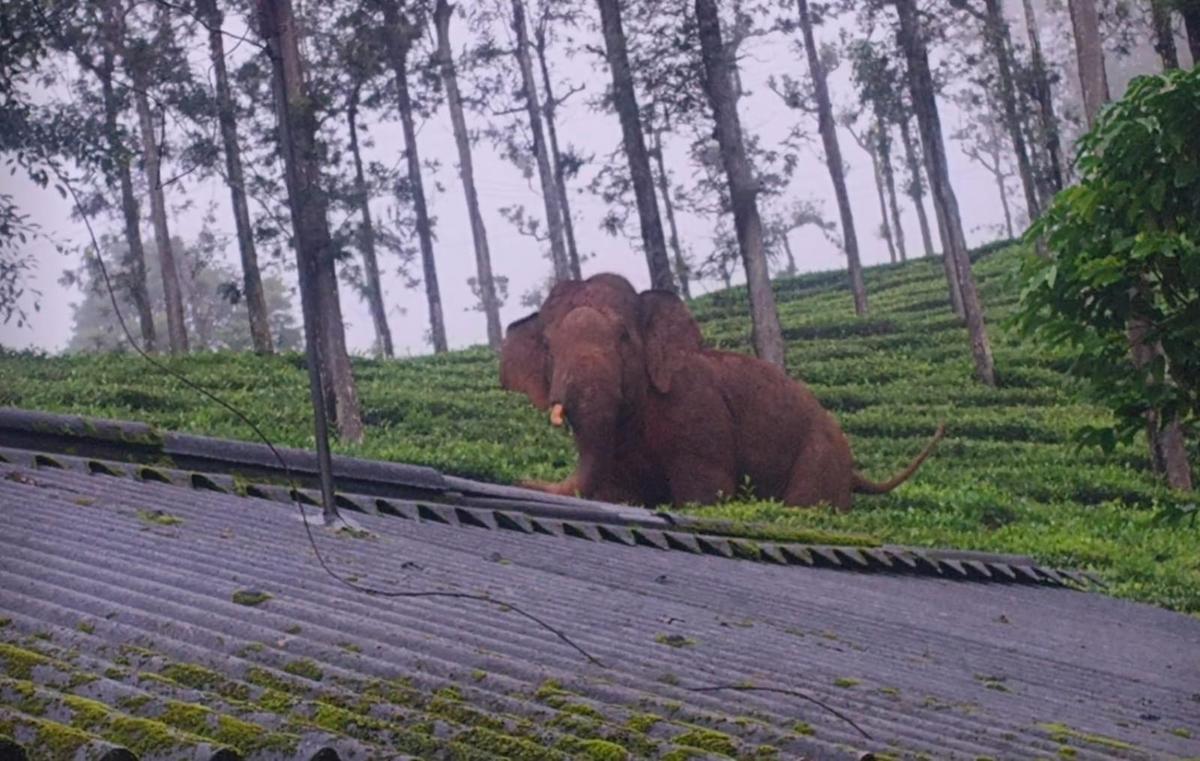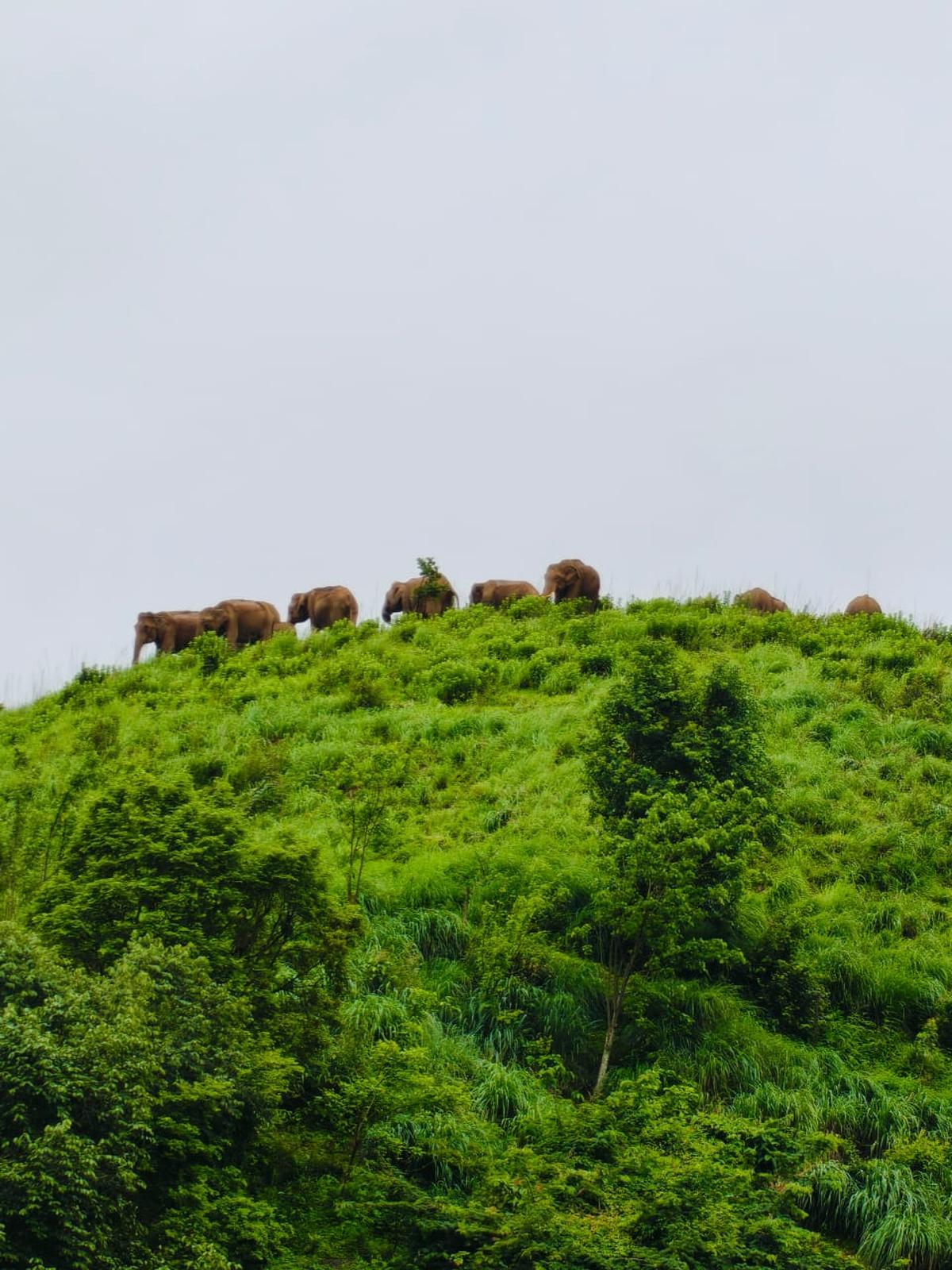The Tamil Nadu Forest department believes illegal fences, erected by large tea estates in the Gudalur region, are the primary drivers causing negative human-elephant interactions in the region.
Residents and politicians from Gudalur have been staging protests against the Forest department and the government, alleging that a lack of elephant-proof trenches and general apathy were driving elephants into human settlements. These included areas such as Padanthorai and Srimadurai, where locals allege elephants were not seen until recently.
However, dismissing these assertions, Vengatesh Prabhu, Divisional Forest Officer (Gudalur), said by comparing notes from noted conservationist, E.R.C. Davidar, it was clear there were 11 migratory paths used by elephants that cut through Gudalur connecting Mudumalai Tiger Reserve with Nilambur and Wayanad in Kerala.

Elephant experts and conservationists from the Nilgiris said that, if verified, the blockages to elephant movement could be highly detrimental to the future of the Asian elephant in the region
| Photo Credit:
Special Arrangement
“These migratory paths, identified in the 1980s, coupled with our learnings, show Gudalur was only used as a migratory route by elephants till the 2000s and was not a habitat for a settled permanent population until the last two decades,” said Mr. Prabhu.
“In fact, in 2002-2003, when the only resident elephant in the region, a makhna, had died, people came out in droves to pay homage to the animal,” he added.
To identify the probable factors that had led to elephants settling in the region, Forest department officials began combing through records of human deaths caused by elephants. They found that it was only after 2008 that human deaths began increasing.

Mr. Prabhu believes this coincides with the period when the major estates in the region began fencing their large estates, some measuring thousands of acres, with barbed wire and electric fencing. “The elephants, which were using this landscape only as a migratory path, began to settle in the region as they simply had nowhere to go as they were penned in by the fences from all sides,” said the DFO.
The Forest department now believes all 11 migratory paths that had been used by elephants to move through the region have become blocked by illegal settlements, fences, plantations, encroachments, and other bottlenecks, creating a resident population of elephants that are unable to move between habitats.
The Forest department believes some elephants are still able to move between the different habitats through Gudalur, including between the Sigur plateau and Kerala, but that these movements are random and are unpredictable due to the bottlenecks created by human settlements.
Elephant experts and conservationists from the Nilgiris said, if verified, that the blockages to elephant movement could be highly detrimental to the future of the Asian elephant in the region. “Asian elephants move between different habitats for a variety of reasons, including socialising, seasonal changes in food availability, but most importantly, for mating. Only if elephants are able to move between different interconnected habitats, can population depression due to in-breeding be prevented and genetic diversity be maintained,” said a conservationist from the Nilgiris who requested to remain anonymous.
If the bottlenecks continued to thwart elephant movement, it could lead to a slow but gradual decline of the elephant population across the region over the next few decades, they cautioned.

The Forest department is holding discussions with estate managers, local residents, and politicians in an attempt to convince them to remove fences preventing elephant movement in certain areas
| Photo Credit:
Special Arrangement
Mr. Prabhu said there were now elephants born in Gudalur who only know of living within the limited confines of the region. “It is simply a myth that elephants were straying out due to a lack of food in forest areas or due to the elephant population increasing,” he added, stating that the Forest department was holding discussions with estate managers, local residents, and politicians in an attempt to convince them to remove fences preventing elephant movement in certain areas.
Short-term measures
For the time being, Mr. Prabhu said steps to mitigate negative interactions are being worked on. While solar-powered lights are being fitted along routes used by villagers so that elephants are more easily seen, high-tech AI-integrated thermal cameras are also to be fitted soon. These cameras will have the capability of noticing elephants from more than two kilometers away so that the public can be notified well in advance before they can approach human settlements, said Mr. Prabhu.
A team of Forest department staff and local residents are also to visit the Anaimalai Tiger Reserve to study the technologies implemented there to ascertain the feasibility of these technologies for use in Gudalur. “The Forest department, supported wholly by the government, is looking at creating a dialogue with local communities to come up with long-term solutions to mitigate negative interactions in the region,” assured Mr. Prabhu.
Published – July 29, 2025 04:38 pm IST